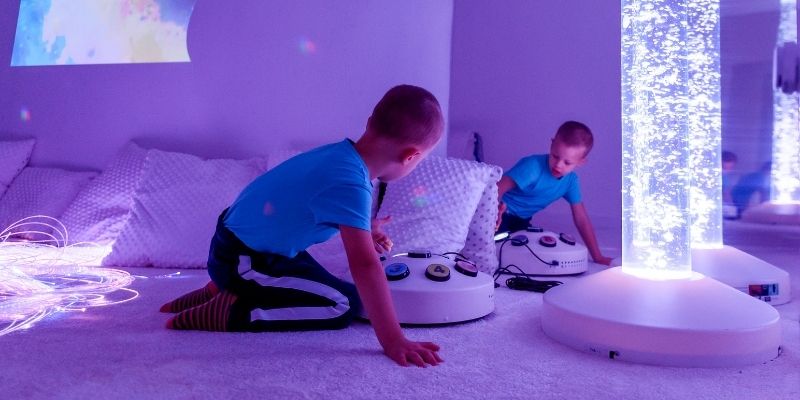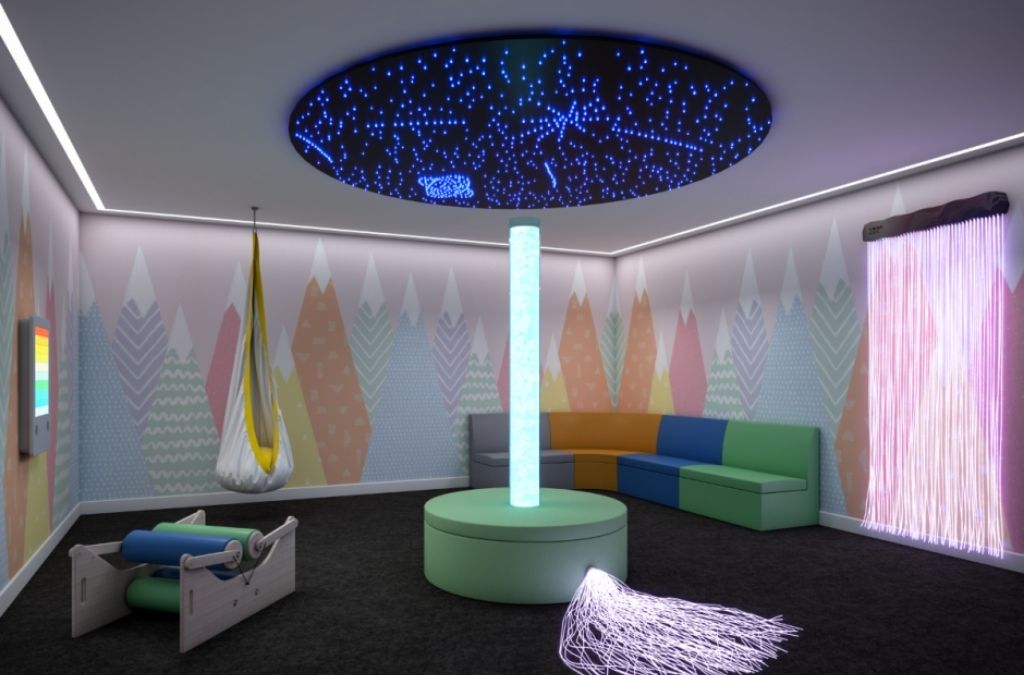A sensory room is designed to provide a safe and supportive environment where children can explore and engage their senses.
Over the years, experts have come up with many ingenious ways to cater to the different requirements of children who struggle with sensory input. However, in many cases, despite all these efforts, we are not seeing any significant impact .
Many children still lack access to quality education purely because they suffer from certain conditions. These make them different from other children and require more specific educational tools.
However, that is not to say that nothing is being done. Sensory learning has emerged as an excellent alternative for certain conditions in recent years. Sensory rooms are being widely used across many educational institutions and create either calming or stimulating sensory spaces.
Continue reading to understand what sensory learning is, how to use it and why sensory rooms are here to stay.
Many children across the world are struggling from a variety of sensory issues. This could be either problems with too much stimulation or not enough! A sensory room gives a safe space for these people as they provide certain types of sensations, which can be controlled.
This room allows children to start regulating their brains’ reactions to any external stimuli. It also allows them to use different strategies to cope with over-stimulation.
A sensory room can either calm or stimulate the senses. These often include hearing, sight, smell and touch.
These rooms create a safe space for people suffering from conditions such as autism or integration disorder. It gives educational requirements to augment and strengthen their sensory skills.
Moreover, these spaces give them a place to relieve stress, relax and deal better with their anxiety.

What Makes This Room Important?
Many children suffer from health complications where they struggle to focus. The simplest explanation is that there is no control in the brain for the huge amount of sensory input coming in. Try to imagine having to focus on an important task with very loud “white noise” around you!
There are also other challenges associated with their emotional or sensory responses. These complications often prevent them from engaging in everyday life as a normal child would.
The human brain regulates and produces different responses to sensory experiences. This includes input from touching, smelling, seeing, hearing, and tasting. In fact, one can even include the pull of gravity around an individual as sensory input. Kids who have difficulty regulating or integrating these inputs can have real difficulty learning.
This process is called sensory integration. Things are fine when people’s brains can react ideally to every sense. However, the problem starts when a child is unable to regulate their reactions to stimuli. They are wrestling in a condition called sensory processing disorder (SPD).
SPD often results in sudden outbursts, which come in many forms. Think of acting-out, rocking, chewing, hand flapping and even emotional meltdowns known as self-stimulation or stimming.
A sensory room is designed to help with this integration. These specifically-designed spaces have the ability to target eight different senses.
The first five include smell, sight, hearing, touch,and taste.
The other three include vestibular stimulation, proprioception, and interoception.
-
Vestibular:
The inside of the human ear is filled with little canals that contain fluid. This fluid moves as the head moves and receptors within the canals transfer this information to the brain.
Through complex mechanisms, these impulses give information about balance and movement.
-
Proprioception:
Humans’ joints and muscles are also equipped with sensory receptors. These tell the brain where the body begins and ends in terms of our surroundings.
-
Interoception:
This is your body’s way of telling the brain about the feelings inside. These feelings can be anything from hearts beating faster, hunger, and even the weird “butterflies in the stomach” feeling.

Schools and other educational institutions can use sensory rooms to stimulate all eight senses. This can be highly beneficial for the suffering individual based on their unique requirements.
Thus, mechanisms such as sensory play can be very useful for children by creating an ideal learning space.
Types Of Sensory Rooms
1. Sensory Integration Rooms
Sensory integration rooms are primarily focused on addressing specific components of the sensory play of an individual. This approach is ideally suited for people who need to work on developing their subconscious abilities to respond and process any incoming stimuli.
Sensory integration rooms generally have a lot of equipment to enhance proprioceptive and vestibular senses. This is done through different elements of pressure and movements. Equipment such as steam roller and swing helps kids practice jumping, balancing and pushing skills.
2. Multi-Sensory Rooms
These rooms are designed to help kids gain greater control of varied aspects of sensation in any given area. Children can be assigned activities that help them discover and better understand the world around them.
Any child facing difficulties sitting still, maintaining focus, or engaging with their surroundings can benefit from multi-sensory rooms. Exercises of this sort help them enhance their attention span over time.
Creating a multi-sensory room is not as challenging as one might expect. All you need are soft floors, padded walls and beanbags to create a safe space for children. These soft spaces play a key role in encouraging their sense of safety.
Final Thoughts
Technology is helping people in many different ways, especially children struggling to learn due to sensory issues.
Educational institutions can now leverage technologies for all children. It is fairly easy to create the ideal sensory rooms and outdoor learning spaces for children with sensory difficulties. Read also – Explain An Autism Diagnosis To Children.
This is a sure-shot way to give everyone an equal opportunity to realize their potential and grow as great humans.
Check out our recent post; Bond With Your Child Using These 5 Simple And Practical Steps.
Our super author here at Famous Parenting and an absolute wealth of knowledge. She has studied many topics including creative writing, psychology and journalism but her real passion lies in raising her 3 children. Between working from home, homeschooling her youngest 2 children and navigating the world of teenagers she is a guru for parents.





